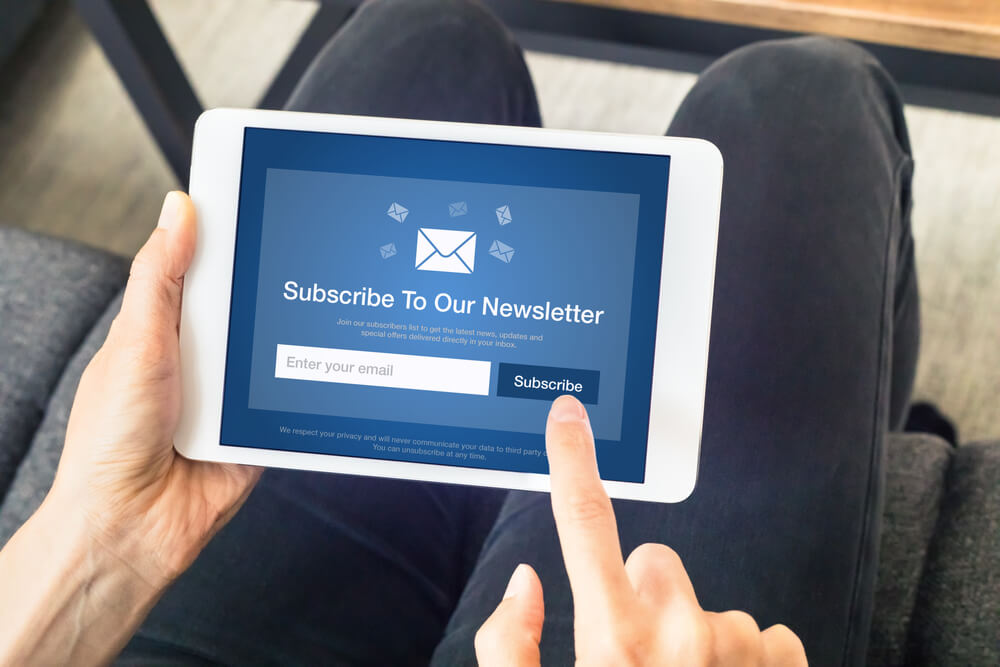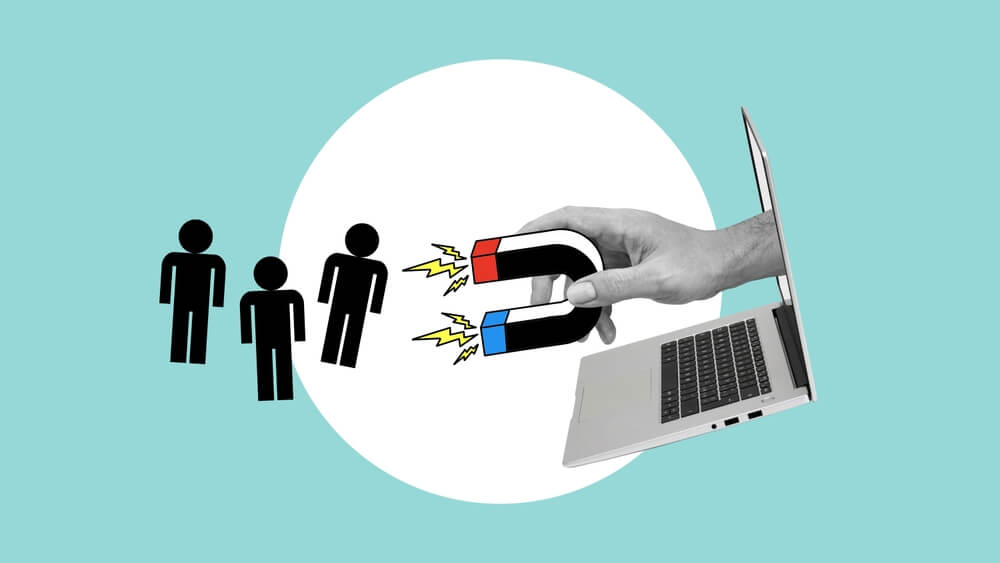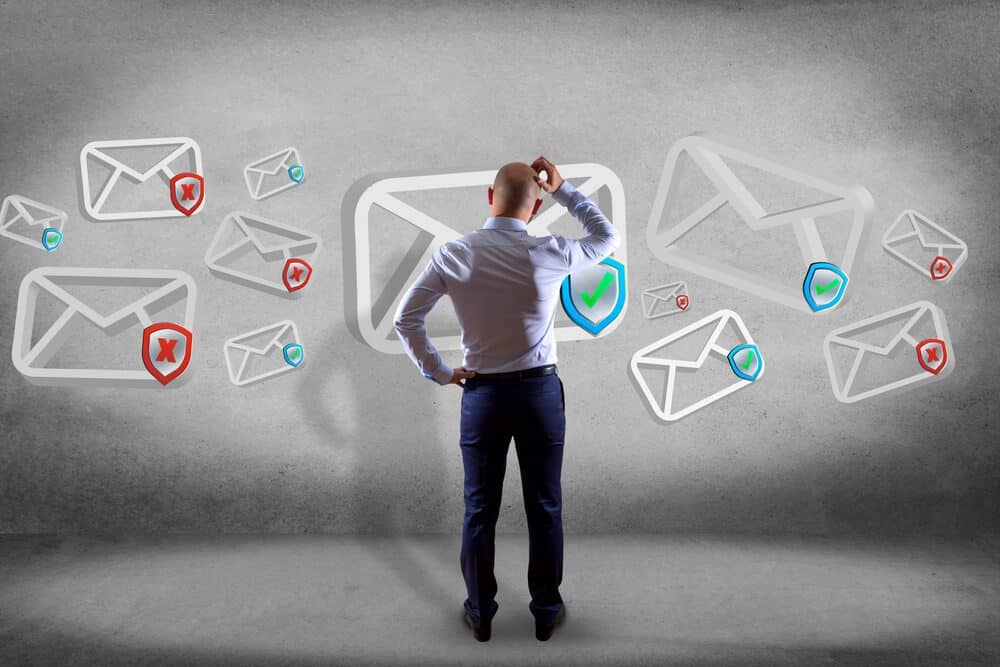
Beginner’s Steps To Build a Strong B2B Email Subscriber List
A subscriber list is fundamental to successful B2B email marketing. It nurtures leads and existing customers by delivering targeted content that keeps them consistently engaged. It also improves brand reputation and awareness.
This beginner-friendly guide walks you through the different steps in building a B2B mailing list:
 Lead magnets are valuable, relevant content that subscribers get in exchange for their mailing list information. They also promote you as an industry leader or an authoritative data source.
The following help you craft effective lead magnets for B2B marketing:
Lead magnets are valuable, relevant content that subscribers get in exchange for their mailing list information. They also promote you as an industry leader or an authoritative data source.
The following help you craft effective lead magnets for B2B marketing:
 Promoting the email list across different marketing channels maximizes its reach and impact. For example, social media platforms can highlight the value of subscribing with engaging content and visuals to capture the audience’s attention.
These strategies teach you how to integrate email lists into your existing marketing efforts:
Promoting the email list across different marketing channels maximizes its reach and impact. For example, social media platforms can highlight the value of subscribing with engaging content and visuals to capture the audience’s attention.
These strategies teach you how to integrate email lists into your existing marketing efforts:
 Complying with email marketing regulations, such as the General Data Protection Regulation (GDPR) or CAN-SPAM Act, is critical to maintaining ethical practices and building audience trust. They protect people’s privacy and promote the responsible use of personal information.
Comply with email regulations when building your B2B mailing list by following these strategies:
Complying with email marketing regulations, such as the General Data Protection Regulation (GDPR) or CAN-SPAM Act, is critical to maintaining ethical practices and building audience trust. They protect people’s privacy and promote the responsible use of personal information.
Comply with email regulations when building your B2B mailing list by following these strategies:
- Identify the target audience.
- Create valuable and relevant lead magnets.
- Optimize website signup forms.
- Promote the email list on multiple channels.
- Offer exclusive content or incentives.
- Comply with email regulations.
Tired of investing in Search Engine Optimization without getting any results? See how Digital Authority Partners turns that around!
1. Identify the Target Audience
Understanding the audience tailors your messaging to resonate with their needs, demographics, and challenges. It also enhances the content’s relevance and increases click-through and open rates. In addition, identifying the target audience streamlines email strategies, fosters deeper connections, and drives more meaningful B2B engagement. Here are ways to effectively identify your target market for email marketing:- Conduct thorough market research to identify the demographics and industries that align with your brand. Analyze industry reports, trends, and competitors.
- Engage with existing customers through surveys and feedback mechanisms. Gather information on their demographics, industries, and professional roles.
- Use data analytics tools and customer relationship management systems to gather audience insights.
- Study competitors to know their audience and uncover underserved market segments.
- Attend industry events, conferences, and networking opportunities to interact with other experts and update yourself on email marketing trends.
2. Create Valuable and Relevant Lead Magnets
 Lead magnets are valuable, relevant content that subscribers get in exchange for their mailing list information. They also promote you as an industry leader or an authoritative data source.
The following help you craft effective lead magnets for B2B marketing:
Lead magnets are valuable, relevant content that subscribers get in exchange for their mailing list information. They also promote you as an industry leader or an authoritative data source.
The following help you craft effective lead magnets for B2B marketing:
- Guide the subscribers on how to access and use the lead magnets. Do they need to download it? Should they go to a specific page? What information can they find in the content?
- Identify the audience’s pain points and challenges. Present lead magnets as solutions to these issues.
- Align lead magnets with your email marketing goals, business objectives, and products. Showcase your knowledge and authority in your content, whether it is an ebook, webinar, or industry report.
- Provide practical and actionable insights on the lead magnets, empowering the subscribers to take tangible steps toward solving their challenges.
- Experiment with different content formats with A/B testing. Diverse lead magnets appeal to a broader audience with varying styles of learning.
- Use email marketing automation tools for effective subscriber analysis and data-driven decision-making.
3. Optimize Website Signup Forms
Effective signup forms are a crucial component of B2B email marketing. They serve as initial points of contact with your targeted leads and a means of collecting valuable information. A seamless and user-friendly signup process enhances the user experience, encouraging visitors to take the desired action. It also speeds up conversion and lays the foundation for building and nurturing meaningful relationships with the audience. Optimize email signup forms with these ideas:- Add signup forms prominently on the website. Make them visible but not intrusive.
- Place forms on popular pages, such as the homepage, blogs, landing pages, and other high-traffic types of content.
- Keep the design of sign-up forms clean, simple, and user-friendly. Minimize unnecessary fields to reduce friction in the submission process.
- Craft compelling and concise messaging to communicate the value proposition. Articulate the benefits that users receive when they sign up. These include exclusive content, discounts, or industry insights.
- Learn how to be persuasive by using a language that resonates with the target audience to motivate them to willingly share their information.
- Optimize the signup forms for mobile devices to boost conversion rates.
- Implement progressive profiling to minimize user fatigue and encourage leads to sign up. Ask for their name and email address initially, then collect more data on succeeding interactions.
- Use clear and compelling calls to action (CTAs) that guide users to subscribe. Make them visually appealing and convey a sense of urgency or exclusivity. Experiment with different form variations to determine what resonates best with the audience.
4. Promote the Email List on Multiple Channels
 Promoting the email list across different marketing channels maximizes its reach and impact. For example, social media platforms can highlight the value of subscribing with engaging content and visuals to capture the audience’s attention.
These strategies teach you how to integrate email lists into your existing marketing efforts:
Promoting the email list across different marketing channels maximizes its reach and impact. For example, social media platforms can highlight the value of subscribing with engaging content and visuals to capture the audience’s attention.
These strategies teach you how to integrate email lists into your existing marketing efforts:
- Strategically add visually appealing email signup CTAs in the blog posts. Encourage the readers to subscribe for updates, exclusive content, or relevant resources.
- Promote email lists on various social media platforms. Craft compelling posts highlighting the benefits of subscribing and include a direct link to the signup page.
- Include an email list in webinars and online presentations.
- Implement exit-intent popups on the website to capture visitors who are about to leave. Craft persuasive messages for the popup. For instance, emphasize the exclusive offers they get when they subscribe.
- Provide incentives for subscribing, such as discounts or early access, to product launches.
5. Offer Exclusive Content or Incentives
Offering exclusive content or incentives is a compelling strategy to attract new subscribers. By providing access to valuable and unique B2B content such as industry insights, expert guides, or premium resources, marketers create a clear value proposition for potential subscribers. Offering incentives such as discounts, special promotions, or early access to new products further enhances the appeal of joining the email list. They entice individuals to subscribe and build a loyal and engaged audience eager to receive more benefits from the brand. Here are examples of exclusive offers that appeal to a B2B audience:- In-depth industry reports that provide comprehensive analyses, market trends, and actionable insights relevant to B2B marketing.
- Invitations to webinars featuring industry experts, thought leaders, or professionals.
- Premium whitepapers that delve into specific challenges, solutions, or emerging trends in the market.
- Early access to new product features, updates, or beta releases.
- Discounts or special promotions on B2B products or services.
- Access to interactive workshops or training to acquire specific skills, strategies, or tools relevant to the B2B audience.
6. Comply with Email Regulations
 Complying with email marketing regulations, such as the General Data Protection Regulation (GDPR) or CAN-SPAM Act, is critical to maintaining ethical practices and building audience trust. They protect people’s privacy and promote the responsible use of personal information.
Comply with email regulations when building your B2B mailing list by following these strategies:
Complying with email marketing regulations, such as the General Data Protection Regulation (GDPR) or CAN-SPAM Act, is critical to maintaining ethical practices and building audience trust. They protect people’s privacy and promote the responsible use of personal information.
Comply with email regulations when building your B2B mailing list by following these strategies:
- Use double opt-in procedures to obtain consent.
- Write a privacy policy. Communicate how you plan to store, use, and protect subscriber data.
- Include a clear and accessible Unsubscribe button in all marketing emails to comply with CAN-SPAM, which requires businesses to provide a straightforward way for recipients to opt out of future communications.
- Refresh consent from subscribers regularly to safely engage with the audience and update the list.
- Train marketing and sales teams on the different email marketing regulations and stress the importance of compliance.
- Audit email marketing practices periodically to determine if they still follow federal regulations. Review processes, documentation, and subscriber data handling to identify and address any potential issues.
Summing Up
This article teaches beginners how to build a robust mailing list for B2B email marketing. It introduces effective strategies such as clearly defining the target audience, designing a good lead magnet, and promoting the list across various channels to maximize visibility. The guide also informs how to grow the list through continuous nurturing, regular updates, targeted content, and compliance with email regulations. When done correctly, emails drive revenue and build strong relationships that speed up conversion. What innovative strategies could you explore to continuously grow and maintain your B2B email subscriber list? Hear from the experts. Contact Digital Authority Partners (DAP) today to schedule a free consultation.Want To Meet Our Expert Team?
Book a meeting directly here



